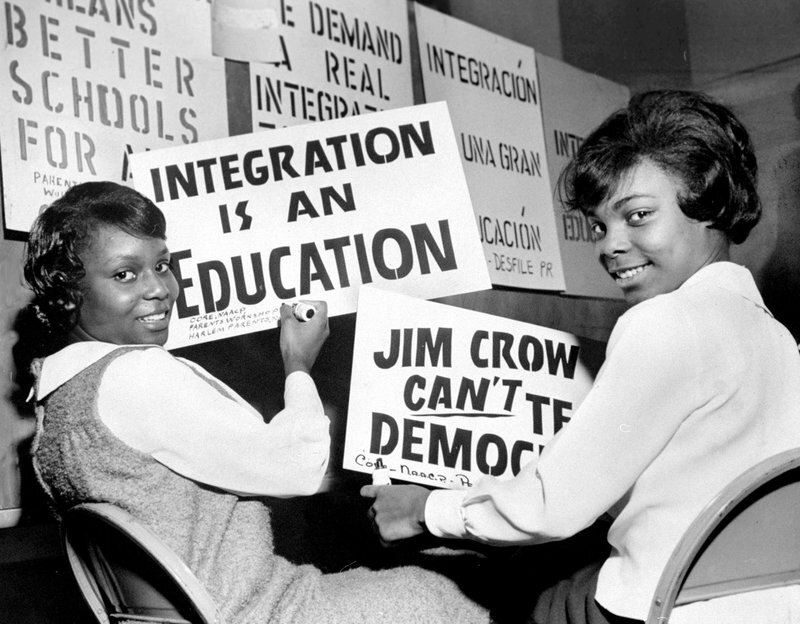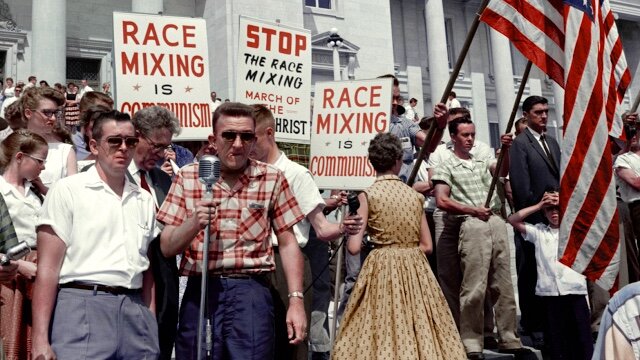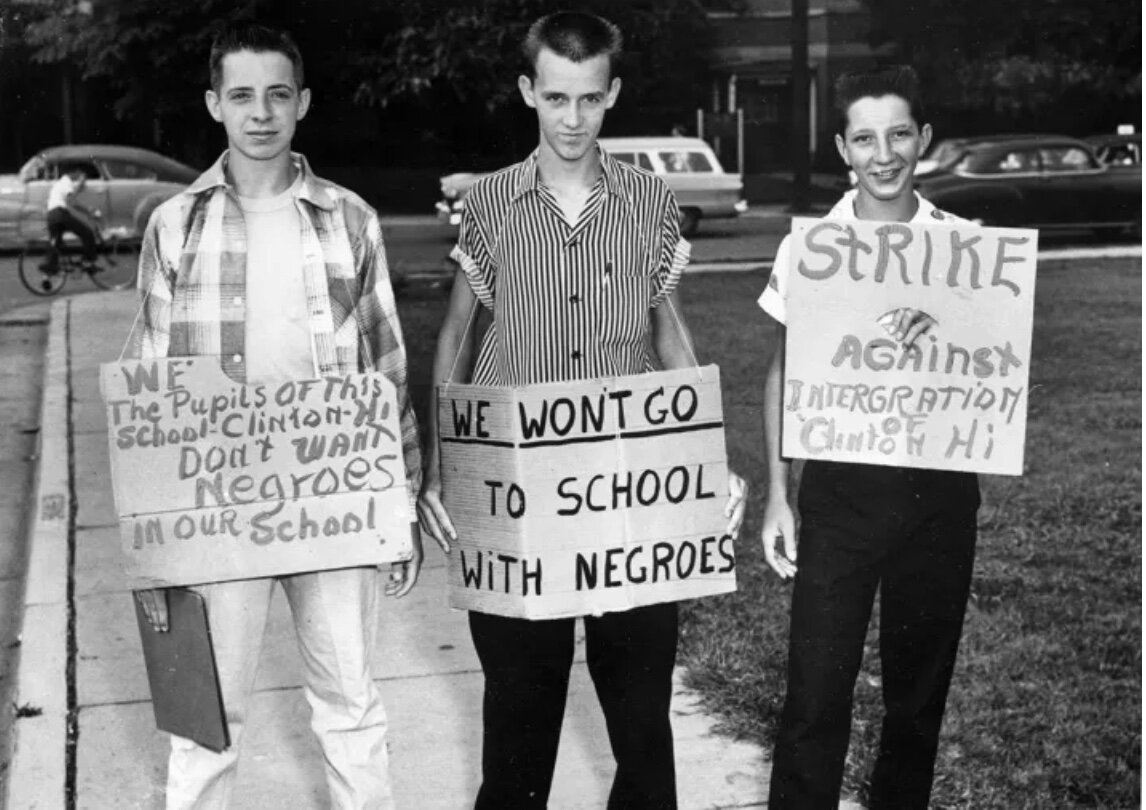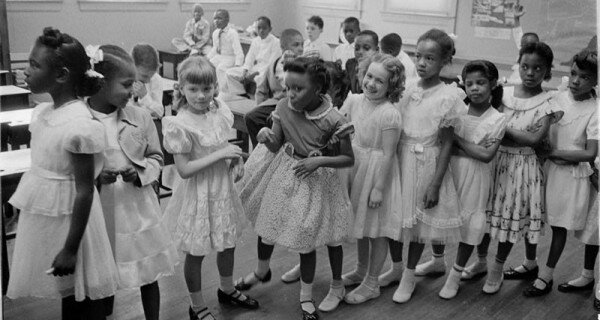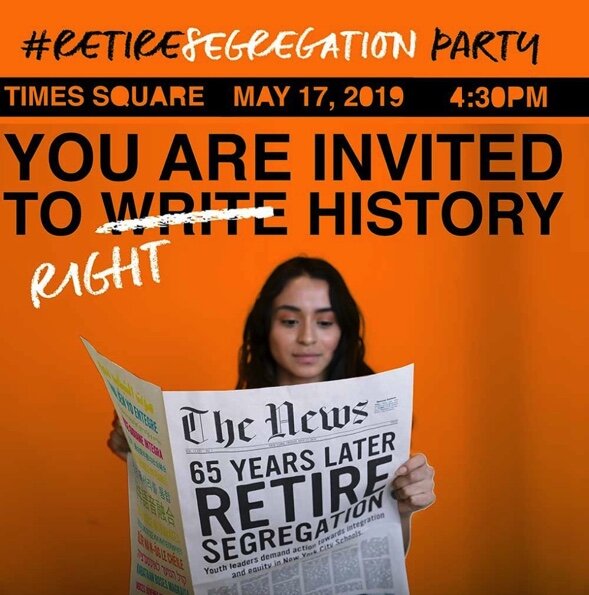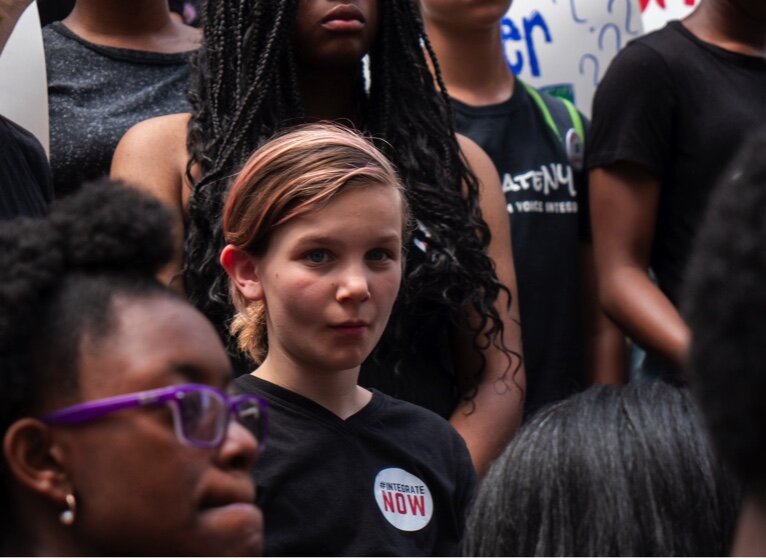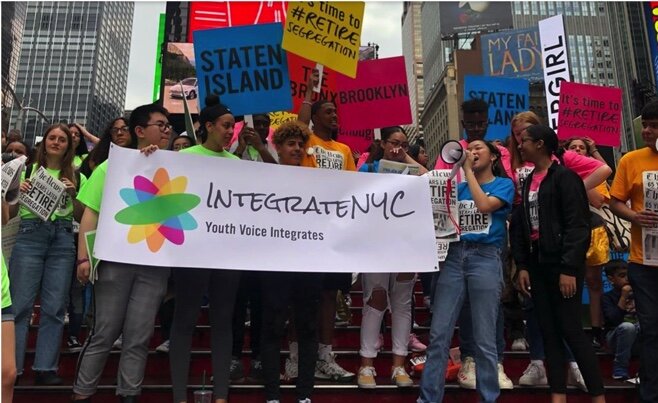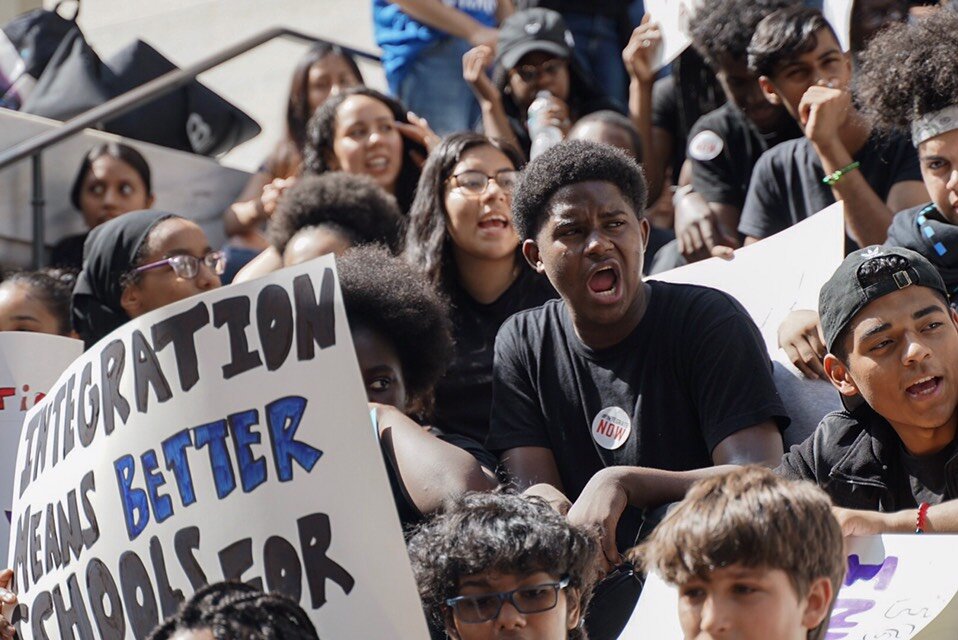The mission of NYC Alliance for School Integration and Desegregation (nycASID) is to advocate for racial and socioeconomic city-wide school desegregation and integration
as a means to:
Uproot white supremacy/engender racial healing,
Preserve and spread the rich culture of marginalized communities,
Uphold the principles of democracy, equality, and human dignity that segregation curtails.
Get Involved
Learn more
Then vs. Now
CRITICAL TERMS AND DEFINITIONS
race
An artificial classification of human beings created by late medieval European elites which assigns human worth and social status (and the associated resources, power, and prestige) using “white” as the model of humanity and the height of human achievement for the purpose of establishing and maintaining wealth, privilege, and power in the hands of a select few.
privilege
Unearned benefits conferred upon members of dominant groups at the expense of others. Privilege exists when one group has something of value that is denied to others simply because of the groups they belong to, rather than because of anything they’ve done or failed to do. Privilege can be manifested visibly (access to wealth and professional opportunities) AND subtly (behavioral freedom/setting the standard of normality against which others are judged). In the United States, white people—especially white, cisgendered, wealthy white males—make up the dominant group.
whiteness
A set of normative privileges granted to white individuals and groups; it is normalized in its production and maintenance for those of that group such that its operations are "invisible" to those privileged by it, but not to those oppressed and disadvantaged by it.
Noteworthy Quote: "Whiteness has a cash value: it accounts for advantages that come to individuals through profits made from housing secured in discriminatory markets, through the unequal educations allocated to children of different races, through insider networks that channel employment opportunities to the relatives and friends of those who have profited most from present and past racial discrimination, and especially through intergenerational transfers of inherited wealth that pass on the spoils of discrimination to succeeding generations." - George Lipsitz
prejudice
A preconceived opinion based on limited information or stereotypes.”Racial prejudice" is a subset of the larger tendency of humans to pre-judge each other, based on a person’s racial categorization rather than their individuality.
power
Access to resources and decision-making to get what you want and define reality for yourself and potentially for others.
racism
RACIAL PREJUDICE + POWER. The systematic targeting, oppression, or marginalization of non-white social groups for the social, economic, and political benefit of the more powerful white social group. Any individual or group of individuals can possess and harm others via racial prejudice(s); nevertheless, only members of the white dominant group can be racist because only they as individuals and as a collective group have the power to translate conscious or unconscious racial prejudice(s) into structural oppression.
white supremacy
An ideology that we, as a society and individuals, actively and passively put into practice, which holds that the thoughts, actions, and bodies of white people are superior to the thoughts, actions, and bodies of People of Color. This ideology shapes and informs social institutions and thus functions as a structural mechanism of oppression that binds white-controlled institutions into systems.
Note: Ideologies are not realities, but are simply ideas constructed into a system by people, and so they can be eradicated by people. In order to deconstruct and mitigate the power of white supremacy, the ideology itself must be understood and acknowledged, and the practices that maintain the ideology must be changed.
Noteworthy Quotes:
"White supremacy is not simply the idea that whites are superior to people of color (although it certainly is that), but a deeper premise that supports this idea—the definition of whites as the norm or standard for human, and people of color as an inherent deviation from that norm." - Robin DiAngelo
“Racism ceased to be the term which best expressed for me the exploitation of black people in this society...I began to understand that the most useful term was white supremacy...Liberal whites do not see themselves as prejudiced or interested in domination through coercion, yet they cannot recognize the ways their actions support and affirm the very structure of racist domination and oppression that they profess to wish to see eradicated. For these reasons, white supremacy is an important term, descriptive of American society.” - bell hooks
desegregation
The dismantling of the beliefs, policies, and practices that physically separate students into racially and economically isolated schools, tracks, classes, and/or programs.
integration
The pedagogical, curricular, and cultural mechanism(s) inside of schools that support racially integrated student bodies. Integration is about decentering whiteness–creating educational opportunities and spaces that are affirming and empowering to all students.
Note: As schools are the population’s first formalized exposure to civic community, an integrated school system is essential for building the foundation of a truly integrated, equitable democracy and society.
Sources that Influenced Our Learning
Bonilla-Silva, Eduardo (2003). Racism without Racists. Lanham, MD: Rowman & Littlefield Publishers, Inc.
Frankenberg, Ruth (1993). White Women, Race Matters: The Social Construction of Whiteness. Minneapolis, MN: University of Minnesota Press.
Fredericks, George M. (2002). Racism: A Short History. Princeton, NJ: Princeton University Press.
hooks, bell (1989).Talking Back: Thinking Feminist, Thinking Black. Boston, MA: South End Press.
hooks, bell (1994). Teaching to transgress: Education As the Practice of Freedom. New York, NY: Routledge.
Lipsitz, George (1998). The Possessive Investment in Whiteness. Philadelphia, PA: Temple University Press.


